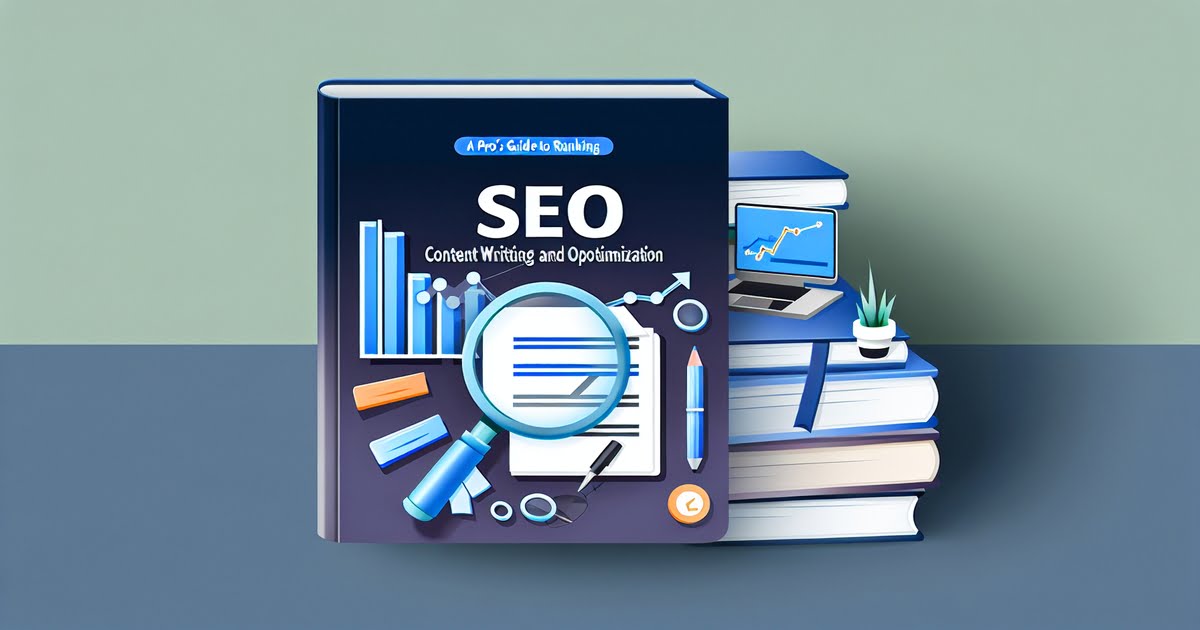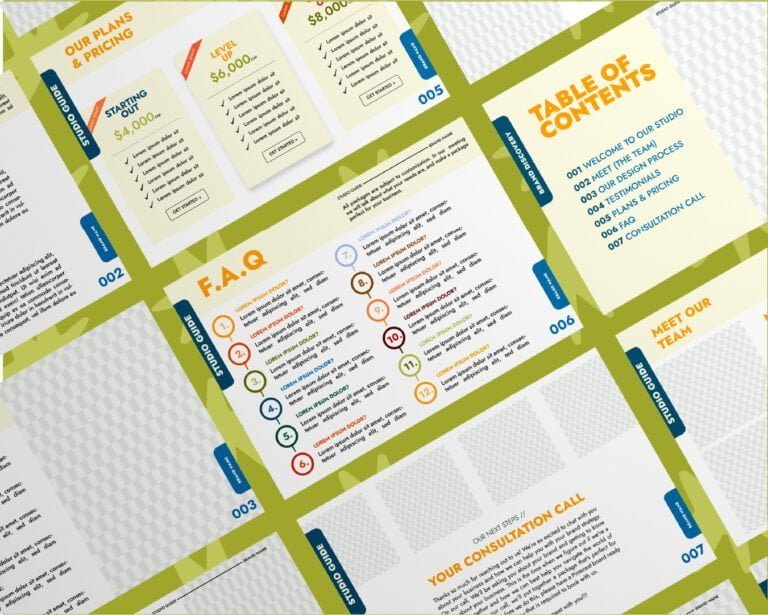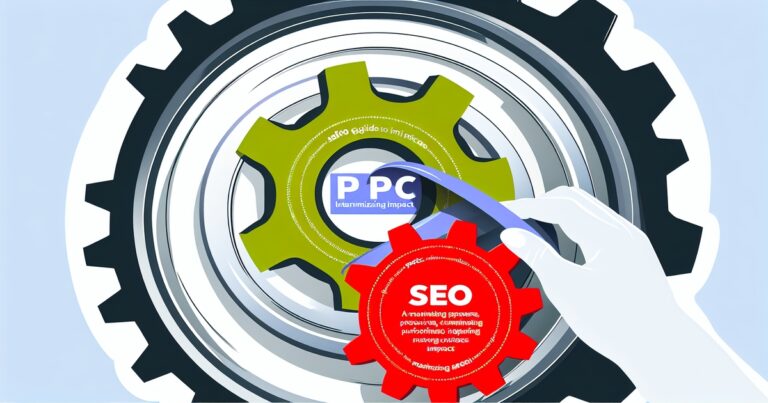Ever wondered how some websites seem to have a VIP pass to the top of search engine results? It’s no magic trick—it’s savvy SEO content writing and optimization at play. In today’s digital arena, crafting words that both humans and algorithms love is an art form essential for online success. We’re diving into the nuts and bolts of creating content that ranks high, engages readers, and drives traffic. Forget fluff; we’ve got concrete tips to enhance your web presence through targeted keywords without sacrificing readability or personality.
From understanding keyword placement to mastering meta tags, we’ll navigate you through the maze of SEO best practices with straightforward guidance. Let’s strip away complexity and make your content work smarter, not harder.
Key Takeaways
Master the basics of SEO writing by familiarizing yourself with how search engines work and what they value in content, ensuring a solid foundation for your content strategy.
Follow essential rules for SEO content creation, such as writing high-quality, engaging material that addresses your audience’s needs while incorporating relevant keywords naturally.
Use keywords effectively by placing them strategically throughout your content to maximize visibility without compromising the natural flow of your writing.
Structure your articles to align with search intent and enhance readability, making it easier for both search engines and readers to digest and engage with your content.
Apply on-page optimization techniques, including optimizing headings, images, and internal links, to improve your website’s search engine rankings and user experience.
Craft compelling meta descriptions and titles that not only reflect your content’s core message but also entice users to click through from the search results page.
Understanding the Fundamentals of SEO Writing
Quality Content
Quality content is king in the digital world. Search engines favor high-quality articles that provide value to readers. This means creating content that is informative, engaging, and well-written. It’s not just about stuffing your article with keywords anymore.
When you write something truly helpful, people spend more time on your page. They read through what you have written carefully. Google notices this and thinks, “Hey, this must be a good page!” As a result, they might place your page higher in search results.
Organic Traffic
SEO helps guide visitors to your website without ads. Think of it like planting seeds in a garden; it takes time but grows lasting results.
You choose the right keywords.
You put these words into great content.
People looking for those words find your site.
This process brings more eyes to what you’ve created naturally – like bees to flowers!
Readability vs Keywords
Finding balance is crucial here! Your writing should flow smoothly and make sense first and foremost.
Too many keywords can make text hard to read.
Not enough can mean no one finds your work.
Imagine talking with friends using big words all the time; they’d get confused or bored quickly! Keep things simple and clear for better understanding.
Essential Rules for SEO Content Creation
Fresh Content
Publishing new content regularly is crucial. Search engines like Google favor websites that update often. This shows the site is active and offers current information. Think of a blog that posts weekly articles on trending topics. It draws readers back, showing search engines it’s a valuable resource.
But don’t just post anything. The content must be high-quality and relevant to your audience. For example, a tech blog should share the latest gadget reviews or industry news to keep readers informed and engaged.
Engine Guidelines
Following search engine rules matters a lot in SEO writing. These guidelines help ensure a fair playing field and provide users with the best experience possible. Breaking these rules can lead to penalties, which might drop your website’s ranking or even remove it from search results entirely.
Learn what search engines want from your content by reading their webmaster guidelines carefully—Google’s are especially important since they dominate global searches.
User-Focused Articles
Creating informative articles centered on user needs is key for SEO success. Your goal should be to answer questions or solve problems for your readers through well-researched, clear explanations.
For instance, if you’re writing about healthy eating habits, include tips backed by nutrition science and make them easy to follow for someone trying to improve their diet without overwhelming them with technical jargon.
Incorporating Keywords for Maximum Impact
Keyword Placement
Strategic use of keywords is crucial. Place your main keyword in the title, headings, and opening paragraph. This signals what your content is about. Your secondary keywords should appear in subheadings and throughout the body text.
Remember to keep it natural. For example, if ‘organic gardening tips’ is a primary keyword, you might start with: “Discover essential organic gardening tips to transform your backyard.” Secondary keywords could include ‘compost techniques’ or ‘natural pest control’.
Density Balance
Keyword density matters but avoid stuffing. Aim for a balance that reads well to humans while helping search engines understand your topic. A good rule of thumb is 1-2% keyword density.
Imagine writing about healthy eating habits where ‘balanced diet’ is key. You wouldn’t repeat it awkwardly; instead, you’d weave it into sentences like: “A balanced diet includes a variety of nutrients necessary for health.”
Long-Tail Keywords
Long-tail keywords can drive specific traffic to your site. These are longer phrases that people type into search engines when they’re closer to making a decision or purchase.
For instance, instead of just using ‘shoes’, target long-tails like ‘women’s waterproof hiking shoes’. It targets consumers looking exactly for that product which may increase conversion rates.
Incorporating these tactics ensures that SEO content writing and optimization work effectively together — guiding more eyes towards your website.
Structuring Articles for Search Intent and Readability
Header Alignment
Users often turn to search engines with specific questions in mind. By aligning your headers with these potential inquiries, you can directly address their needs. Think of each header as a signpost that promises the answer just a few lines away.
For instance, if someone is searching for “how to optimize SEO content,” a header like “Steps to Optimize Your SEO Content” immediately signals relevance. This alignment not only satisfies the user’s intent but also helps search engines understand the structure and focus of your content.
Paragraph Simplicity
Short paragraphs are essential for clarity. Readers can quickly scan through the text and grasp key points without feeling overwhelmed by dense blocks of text.
Use bullet points to list ideas or steps.
Keep sentences under fifteen words.
Break up long explanations into smaller chunks.
Imagine explaining how keywords impact SEO:
Keywords help users find your article.
They should match what people are searching for.
Place them naturally within your content.
By breaking down information this way, it becomes more digestible and easier to remember.
Subheading Hierarchy
Effective use of subheadings creates an organized hierarchy that guides readers through your article logically. Each subheading should build upon the previous one or introduce a new section related to the main topic.
Subheadings act like chapter titles in a book; they give readers an idea of what’s coming next, allowing them to jump straight to sections they’re most interested in if needed.
Consider using bolded phrases within paragraphs as mini-headlines too – they grab attention even when skimming through the page:
Keyword Placement: It’s about where you put them. Content Relevance: Make sure it matches user searches. Engagement Metrics: These tell you if people like what they read.
On-Page Optimization Techniques
Image Alt Text
Using alt text for images is crucial. It helps search engines understand what an image is about. This can improve your site’s visibility in image searches. Also, it makes your content accessible to users with visual impairments.
Start by describing each image briefly and accurately. Use keywords if they fit naturally. For example, if you have a picture of a chocolate cake on your baking blog, the alt text could be “easy homemade chocolate cake recipe.”
Internal Linking
Internal linking connects different pages within your website. It guides visitors to more relevant content and keeps them engaged longer.
To do this well, link words or phrases in your text to other pages on your site that expand on that idea. Say you’re writing about healthy eating; you might link the phrase “benefits of omega-3” to a page detailing those benefits.
URL Structure
A logical URL structure reflects the organization of your website—it’s like a roadmap for both users and search engines.
Keep URLs short but descriptive. They should include keywords related to the page’s content when possible—avoid numbers or characters that don’t mean anything to readers or search engines. For instance, use /recipes/chocolate-cake instead of /page1/article2.
Crafting Compelling Meta Descriptions and Titles
Keyword Focus
Meta titles serve as the headline for your webpage in search engine results. It’s vital to include target keywords here. This helps search engines understand what your page is about. But remember, it must also make sense to humans.
Start by identifying the main keyword for each page. Place this keyword towards the beginning of your title if possible. For instance, a blog post about healthy eating might have a title like “Healthy Eating Tips: A Guide to Nutritious Meals.” Here, “Healthy Eating Tips” is likely the target keyword.
Titles should be appealing and informative. They are not just for SEO robots but real people too.
Click-Worthy Descriptions
Your meta description acts as an ad copy that can persuade users to click through to your site from the search results page (SERP). It should offer a clear value proposition and call-to-action (CTA).
To write descriptions that encourage clicks:
Highlight benefits or solutions.
Use active voice and action verbs.
Include a CTA like “Learn more,” “Get started,” or “Discover.”
For example, if you’re selling eco-friendly water bottles, you could say, “Stay hydrated with our durable, BPA-free water bottles – perfect for on-the-go lifestyles! Shop now!” This tells potential customers exactly what they’ll get and invites them to make a purchase.
Make sure every meta description matches its page’s content well. Misleading descriptions can hurt trust and increase bounce rates.
Optimal Lengths
Keeping titles under 60 characters ensures they display fully on SERPs without being cut off mid-sentence. This length limit challenges writers to be concise yet descriptive enough so users know what to expect when they click on a link.
When crafting titles:
Write out several options.
Count their characters.
Test how they look in SERP preview tools online before deciding on one.
Similarly, keep meta descriptions brief but powerful—around 155 characters is ideal because anything longer might not show up completely in search results.
Strategies for Historical Content Optimization
Update Statistics
Updating outdated statistics is crucial. It keeps content relevant and trustworthy. Imagine reading about smartphone trends from 2010 in today’s market—it wouldn’t make sense! Check your facts and figures at least once a year.
Start by identifying posts with outdated data. Replace old numbers with recent studies or reports. This not only boosts credibility but also SEO rankings, as search engines favor up-to-date information.
Refresh Insights
Old posts can gain new life with current insights. Industries evolve, and so should your content. For example, if you wrote about social media marketing five years ago, include the latest platforms that have since emerged.
Revise paragraphs to reflect recent developments or changes in opinion. Add quotes from industry leaders who are shaping today’s trends.
Re-promote Content
Once updated, re-promoting content is key to reaching new audiences who may have missed it the first time around. Use social media channels and email newsletters to share the refreshed articles.
Highlight what’s new in your updates when sharing them online. Mentioning the addition of fresh stats or insights can intrigue readers to revisit older content.
Building a Robust Link-Building Strategy
Authoritative Backlinks
Acquiring backlinks from reputable sites is crucial. It shows search engines your content is valuable. Think of each backlink as a vote for your site’s quality.
Start with research. Find websites that are respected in your field. Reach out to them with personalized messages, explaining how linking to your content benefits their audience.
Remember, it’s about quality, not quantity.
Measuring SEO Content Success Over Time
Keyword Tracking
To understand how well your content performs, monitoring keyword rankings is essential. This means checking where your web pages appear in search engine results for specific keywords over time. It’s a clear indicator of visibility.
Start by listing main keywords you want to rank for. Use tools to track their positions weekly or monthly. Notice any trends? If rankings go up, your SEO efforts are working. But if they drop, it’s time to revise your strategy.
Traffic Analysis
Next is looking at organic traffic growth. This refers to the number of visitors coming from search engines without paid ads. Increasing organic traffic often means more people find and visit your site through searches.
Use analytics software to check this metric regularly. Compare the numbers each month or quarter against previous periods. See a steady climb? Your content likely resonates with users and search engines alike.
Engagement Evaluation
Lastly, let’s talk about engagement metrics like bounce rate and time on page.
A lower bounce rate suggests visitors find what they’re searching for on your site.
More time spent on a page usually means content is engaging and valuable.
Review these stats using analytics tools too. They help paint a picture of user behavior once they land on your website.
Final Remarks
SEO content writing and optimization aren’t just about stuffing pages with keywords; it’s an art form that balances search engine needs with human touch. You’ve learned the ropes—from nailing the basics to on-page tricks and link-building strategies. Remember, it’s a marathon, not a sprint. Keep your content fresh, relevant, and engaging, and the results will follow. Think of SEO like a puzzle; you’ve got all the pieces, now it’s time to put them together.
Ready to climb those search rankings? Roll up your sleeves and dive in. Tweak those meta tags, fluff up your articles for readability, and keep those links coming. Your journey to SEO mastery is just beginning. Keep tracking, adjusting, and learning—you’ve got this! And hey, if you ever hit a snag or need a fresh pair of eyes on your content strategy, don’t hesitate to reach out for help. Let’s make your content shine!
Frequently Asked Questions
What is SEO content writing?
SEO content writing involves crafting content that’s optimized for search engines, making it easy for people to find through searches.
Why are keywords important in SEO?
Keywords act like beacons, guiding searchers directly to the content that matches their query. They’re crucial for visibility.
How do I structure my article for better readability and SEO?
Break your text into small paragraphs with headers. Think of it as creating a map that leads readers through your content effortlessly.
Can meta descriptions affect my page’s performance in search results?
Absolutely! A compelling meta description can be the difference between someone clicking on your link or passing it by.
What’s link-building, and why does it matter?
Link-building is like networking online; quality links from reputable sites boost your site’s credibility and rankings.
How often should I check my SEO progress?
Regular checks let you pivot strategies quickly. Aim for at least monthly reviews to stay on top of performance trends.









